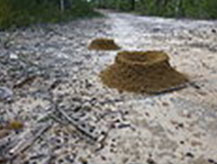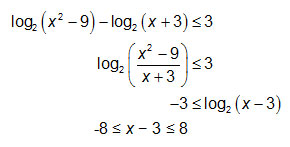
Source: Brisbane Water National Park, Jacopo Werther, Wikimedia Commons

Source: Brisbane Water National Park, Jacopo Werther, Wikimedia Commons
In nature, most organisms grow or decay exponentially. For example, when describing the growth of the world’s population, you are using an exponential function.
One example of exponential growth is the number of fire ant colonies in Texas. Although there isn’t an exact formula to determine the colony growth, the function below is a popular one where N equals the number of mounds in a given area over time t.
N(t) = 2650e1.15t
For this lesson, you will use a simplified function that describes the growth of the number of fire ant colonies, N, in a given area over a time period of t years.
N(t) = 2650e1.15t
There are many factors to consider when you think about reasonable solutions for this situation.
One interesting fact is the number of colonies initially grew rapidly because when the fire ants moved from South America to Texas, their natural predators didn’t arrive with them.
![]() Think about a reasonable answer to the question and then click on the ant to check your answer.
Think about a reasonable answer to the question and then click on the ant to check your answer.


Thinking about the questions above, an inequality representing the information would be:
0 ≤ 2650e1.15t ≤ ∞.
Determine whether or not 3-5 < 4-5 is a true statement.
![]() Click on the inequality to show the next step.
Click on the inequality to show the next step.
Is the inequality aInteractive popup. Assistance may be required.
? How do you know?
The inequality is not a true statement because the first fraction is greater than the second fraction.

![]() Create a reasonable inequality by dragging the given information into the correct location. Not all of the information will be used.
Create a reasonable inequality by dragging the given information into the correct location. Not all of the information will be used.
Below is an example of an inequality involving logarithms.
Miguel noticed a slow-growing bacterium. After examining it, he determined the bacterium was growing exponentially at a rate of 8% every day. The initial population of the bacteria was 500. Miguel’s hypothesis was that he would have at least 10,000 bacteria by the 20th day. Determine if this is a reasonable hypothesis. Use the following formula to determine the number of days when the bacteria will have a population of at least 10,000.
![]() Start with the formula below. Move the equations in order to determine if Miguel’s hypothesis is reasonable.
Start with the formula below. Move the equations in order to determine if Miguel’s hypothesis is reasonable.
There will be at least 10,000 bacteria after 31 days; therefore, Miguel’s hypothesis was not reasonable.
![]() Move each statement and/or equation to either the reasonable or unreasonable category.
Move each statement and/or equation to either the reasonable or unreasonable category.
Interactive popup. Assistance may be required.
2-e ≤ 5-e is unreasonable because the statement isn’t true. If the inequality were changed to greater than or equal to, ≥, then the statement would be reasonable.
Interactive popup. Assistance may be required.
They are both logarithms and involve using the properties of logarithms to solve. The inequality x ≥ 8, log2 x + log2 (x – 6) ≥ 4 is a base 2 logarithm and 0 < x ≤ 4, log x + log (x + 21) ≤ 2 is a base 10 logarithm. The second inequality is more restrictive with respect to possible solutions because it isn’t possible to take the log of a negative number and the inequality is less than or equal to.
List at least three factors you consider when determining whether or not an inequality is reasonable.
Interactive popup. Assistance may be required.
Possible answers may include the following:
Interactive popup. Assistance may be required.
Substitute the information into the equation and solve for t.
Interactive popup. Assistance may be required.
No, it is not a reasonable amount of time for Jose to save $1,500. It would actually take almost 21 years to save $1,500 because the interest rate is low, and Jose would like to triple his income.
Interactive popup. Assistance may be required.
Solve the problem, remembering that it will be a division problem.
Interactive popup. Assistance may be required.
The reasonable solution for the inequality is 3 ≤ x ≤ 11. See below.

However, by plugging in test values, we see that the values in the interval -5 ≤ x ≤ 3 are not reasonable.